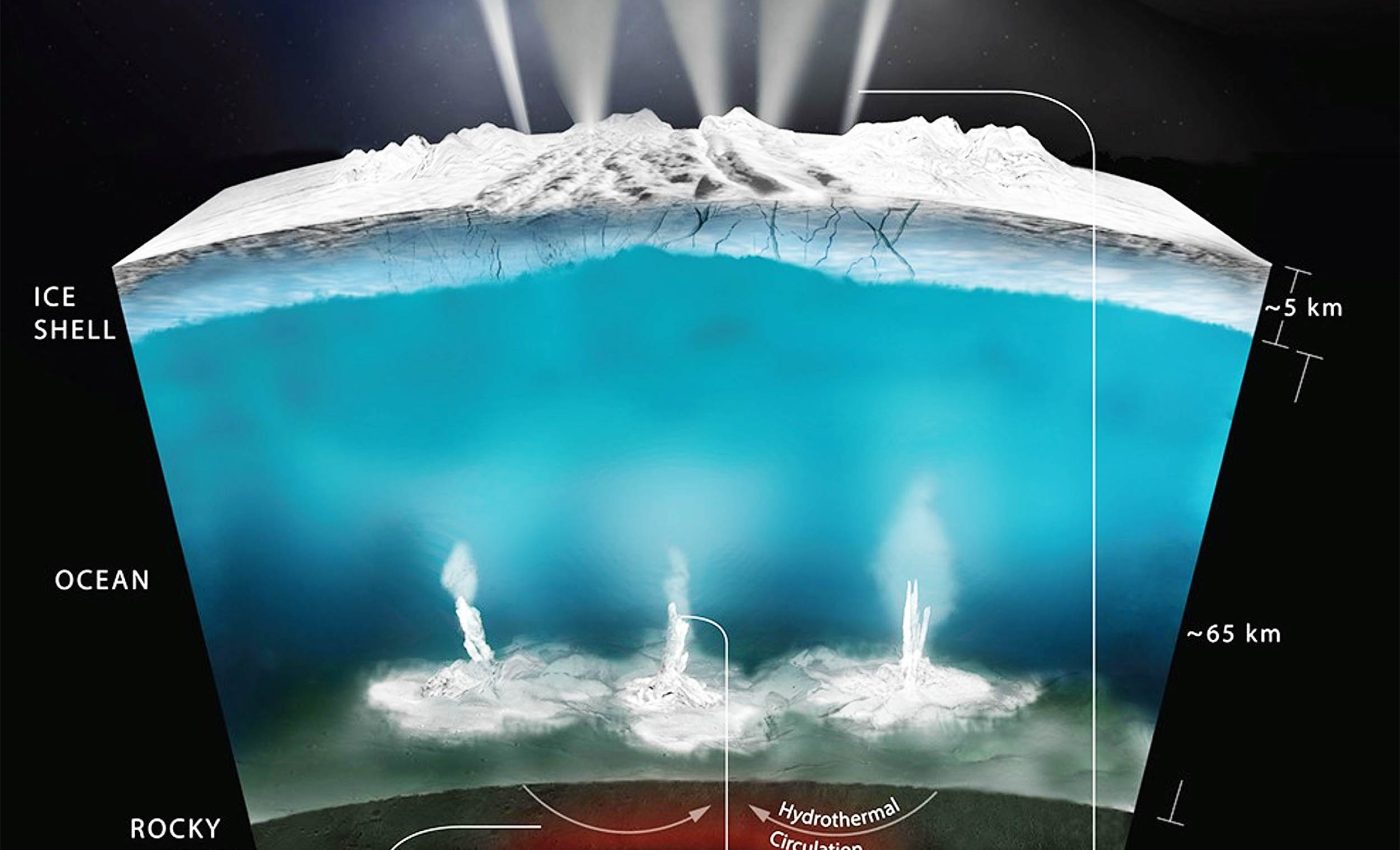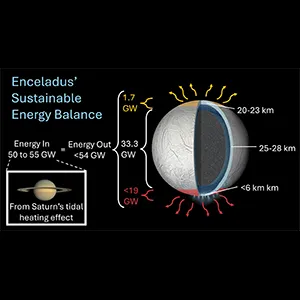
Odds of finding extraterrestrial life on NASA's top contender just improved dramatically
Saturn’s small moon Enceladus appears to run on a tight energy budget. New analysis of NASA’s Cassini data shows the world sheds about 54 gigawatts (GW) of heat, the kind of output that can keep its buried ocean stable over deep time.
The work traces heat escaping not only from Enceladus’ famous south polar fractures but also from its north pole, a region once thought quiet.
Cassini first revealed this moon’s geysers and global ocean during its long tour of the Saturn system, as documented by NASA.
Heat keeps Enceladus’ oceans alive
A steady ocean needs a steady power source. That is where tidal heating – flexing driven by Saturn’s gravity that generates interior heat – comes in.
The work was led by Georgina Miles, a planetary scientist at the Southwest Research Institute (SWRI) and a visiting scientist in physics at the University of Oxford. Her research focuses on icy moons and how heat moves through their surfaces.
“Understanding how much heat Enceladus is losing on a global level is crucial to knowing whether it can support life,” noted study co-author Carly Howett.
“It is really exciting that this new result supports Enceladus’ long-term sustainability, a crucial component for life to develop.”

Tracking the heat from Enceladus
Cassini’s Composite Infrared Spectrometer (CIRS) acted like a remote thermometer, mapping heat that leaked from surfaces and atmospheres.
Researchers compared north polar observations from deep winter in 2005 with summertime in 2015. They then checked those data against a physical model.
The winter surface proved about 7 kelvin warmer than expected, a subtle but telling signal that heat was moving upward from the ocean below.
To match those readings, the team inferred a north polar heat flow of about 46 milliwatts per square meter (mW/m²).
That result depends on effective emissivity – a measure of how efficiently a surface emits infrared energy – which drops at very cold temperatures.
Energy escaping from the ocean
From that heat flow, the team estimated the ice thickness at the measurement sites. The north polar ice layer is roughly 12 to 14 miles thick. The global average is about 16 to 17 miles.
Those values point to conductive heat flux – heat carried upward through solid ice – as a major pathway for the ocean’s energy to escape. They show that this process likely moves a significant share of the heat.
Adding the southern output shows that the moon’s total heat loss matches the power tidal forces are predicted to supply.
Life’s ingredients are there
Cassini has already found several ingredients that make Enceladus worth the watch. The plume grains include phosphates, phosphorus-bearing salts useful for cells, which were identified in reanalyzed dust analyzer data.
The spacecraft also detected complex organics, large carbon-rich molecules that hint at active chemistry inside the ocean. None of this proves biology, but it checks key boxes for habitability.

The role of thermal monitoring
Thermal data can also double as a ruler. By tying heat flow to ice thickness, mission teams can narrow down where a lander or sampler would have the shortest and safest path to ocean material.
“Eking out the subtle surface temperature variations caused by Enceladus’ conductive heat flow from its daily and seasonal temperature changes was a challenge, and was only made possible by Cassini’s extended missions,” said Miles.
Long records matter because winter at the pole is when the signal stands out most. The Cassini archive will keep yielding insights as models improve and new laboratory measurements refine ice behavior at extreme cold.
Future missions will need sustained thermal monitoring and careful site selection. They will also need instruments tuned to the faint glow of a world that leaks just enough heat to keep its ocean alive.
What future missions must measure
Upcoming spacecraft will need to map temperature changes across many seasons. Long cycles reveal subtle heat signatures that short flybys miss.
They will also need sensitive infrared instruments that can detect the coldest regions with enough precision to separate surface behavior from deeper heat flow.
Mission planners will likely focus on landing sites where the ice is thinner or where tidal stresses push heat upward more efficiently.
These locations offer the clearest chance to sample ocean material. They also help validate whether the conditions for life have persisted long enough to matter.
The study is published in the journal Science Advances.
—–
Like what you read? Subscribe to our newsletter for engaging articles, exclusive content, and the latest updates.
Check us out on EarthSnap, a free app brought to you by Eric Ralls and Earth.com.
—–













